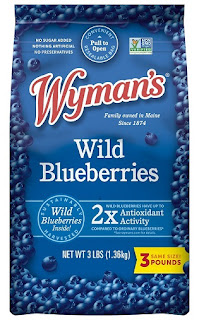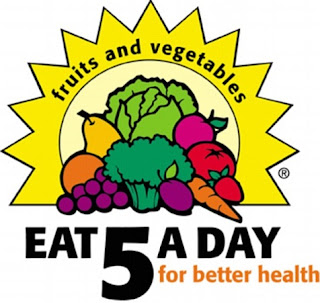Antioxidants and good health
Who isn’t interested in upping their immune system and boosting their health during this COVID-19 pandemic? One way to do so is to boost your intake of foods rich in antioxidants. Everyone has heard of our need for vitamins and minerals, but for good health we also need the oh so important antioxidants. MSN has a good article this month, Why antioxidants are so important to your overall health .
What are antioxidants? NIH notes “Antioxidants
are man-made or natural substances that may prevent or delay some types of cell
damage.” Some vitamins and minerals have
antioxidant properties like Vitamins C and E and the mineral, selenium. But there are other antioxidants naturally
present in foods like carotenoids
(think orange like carrots, sweet potatoes, cantaloupe) that include beta-carotene,
lycopene, lutein and zeaxanthin. No need
to remember the chemical names, but what is important to know is which foods
are rich in these antioxidants.
To add antioxidants to your day, rely on food, not supplements. In fact, NIH states that “Rigorous scientific studies involving more than 100,00 people combined have tested whether antioxidant supplements can help prevent chronic diseases, such as cardiovascular diseases, cancer, and cataracts.” In most cases, the supplements of antioxidants did not reduce “the risks of developing these diseases”.
What foods are rich in antioxidants? You have a lot of ways to add more antioxidants to your day.
Fruits and Vegetables: NIH notes, “Vegetables and fruits are rich sources of antioxidants.” But don’t rely on any one vegetable or fruit. The different colors in fruits and vegetables mean different antioxidants. Some fruits rank very high in antioxidants such as cranberries, blueberries and blackberries. Running a close second are apples and dried fruits.
· Red: means lycopene – think tomatoes, salsa, tomato sauce, tomato juice, catsup, watermelon, pink grapefruit.
·
Blue/Purple:
these provide the antioxidant, anthocyanin. Look for foods that are deep purple, blue, or
deep red. Blueberries are often called a
“superfood” and one reason why is they are a rich source of this
antioxidant. Other sources are
blackberries, beets, black currants, red cabbage, cranberries, purple grapes, and
cherries. My husband just bought some
fresh cherries so I will be loading up on anthocyanin this week. One study
found that a cup of berries will provide “all the disease-fighting antioxidants
you need in a single day.”
 |
| Blueberries are rich in antioxidants. |
· Orange: these provide the antioxidant, carotene, and include oranges, mangos, cantaloupe, peach, tangerines, apricots, sweet potatoes, pumpkin, carrots, yellow and orange peppers, acorn squash.
Does cooking foods destroy antioxidants? No. In fact, in cooked tomatoes such as tomato sauce, catsup, spaghetti sauce, the lutein is even better absorbed. Heating up some blueberries will actually enhance the antioxidant level. Good to know as I like to put some frozen blueberries on my oatmeal before I zap it in the microwave.
How many servings of fruits and vegetables should you have each day? USDA recommends at least 5 A Day. To help stave off COVID, a relative says she and her husband are boosting their immune system by eating at least 7 A Day. So, to boost your immune system this week, load up on more fruits and veggies. Fresh, frozen, cooked – doesn’t matter. And, remember, vary the color to vary the kind of antioxidants you are getting.
 |
| At least 5 A Day, more is even better. |
Sources: Why antioxidants are so important to your overall health, NIH, carotenoids, supplements, notes , lycopene , anthocyanin , study , Orange , cooking Image sources: Wild blueberries , Antioxidants , 5 a Day




.png)
Comments
Post a Comment